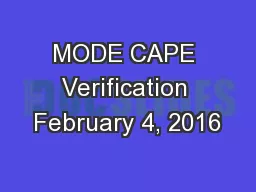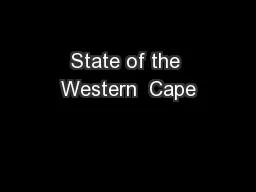PPT-MODE CAPE Verification February 4, 2016
Author : giovanna-bartolotta | Published Date : 2018-10-30
Tracey Dorian Fanglin Yang IMSG at NOAANCEPEMC Thank you to John Halley Gotway and Tara Jensen from DTC 1 Background Compared operational GFS to the Parallel GFS
Presentation Embed Code
Download Presentation
Download Presentation The PPT/PDF document "MODE CAPE Verification February 4, 2016" is the property of its rightful owner. Permission is granted to download and print the materials on this website for personal, non-commercial use only, and to display it on your personal computer provided you do not modify the materials and that you retain all copyright notices contained in the materials. By downloading content from our website, you accept the terms of this agreement.
MODE CAPE Verification February 4, 2016: Transcript
Download Rules Of Document
"MODE CAPE Verification February 4, 2016"The content belongs to its owner. You may download and print it for personal use, without modification, and keep all copyright notices. By downloading, you agree to these terms.
Related Documents













